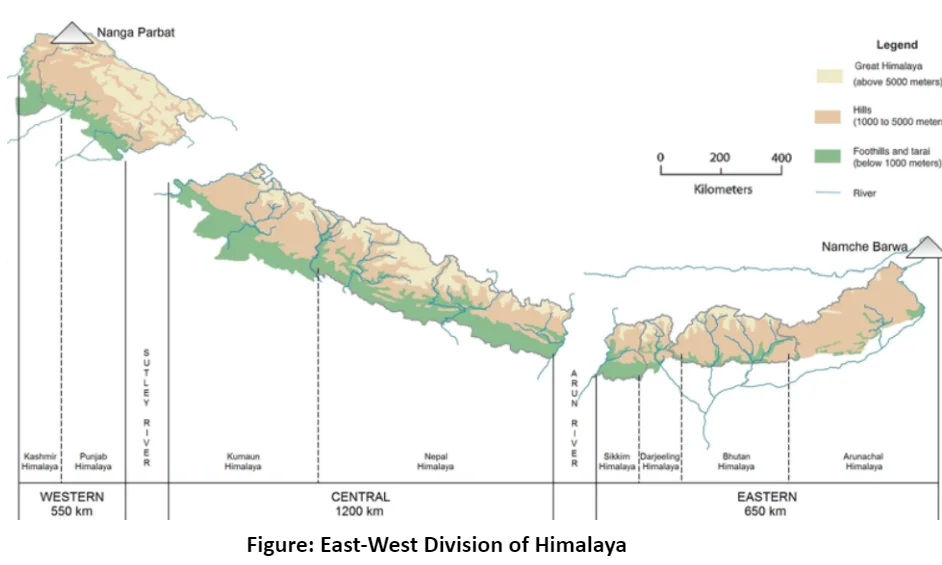![]() May 4, 2024
May 4, 2024
![]() 11937
11937
![]() 0
0
The Himalayas, a young and mighty mountain range, stretch from the Indus River to the Brahmaputra River, dividing into several sections along the way. East West Division of Himalayas extends from the towering peaks of the Northwestern Himalayas to the lush valleys of the Eastern Hills, these mountains shape the landscape and culture of India. With each region offering its wonders and challenges, the Himalayas stand as a symbol of resilience and wonder in India’s geography.

| Karewas: Karewas are the thick deposits of glacial clay and other materials embedded with moraines. |
| Nokrek is the highest peak of Garo Hills situated on the Meghalaya Plateau. [UPSC 2023] |
| Must Read | |
| Current Affairs | Editorial Analysis |
| Upsc Notes | Upsc Blogs |
| NCERT Notes | Free Main Answer Writing |
In India’s geography, the Himalayas highlight a vivid picture of diversity and beauty. From the cold deserts of Kashmir to the tea plantations of Darjeeling, and from the tribal communities of Arunachal Pradesh to the gentle slopes of the Eastern Hills, these mountains are more than just natural landmarks – they are the heart and soul of a nation, influencing climates, cultures, and civilizations for generations to come.
<div class="new-fform">
</div>
Latest Comments